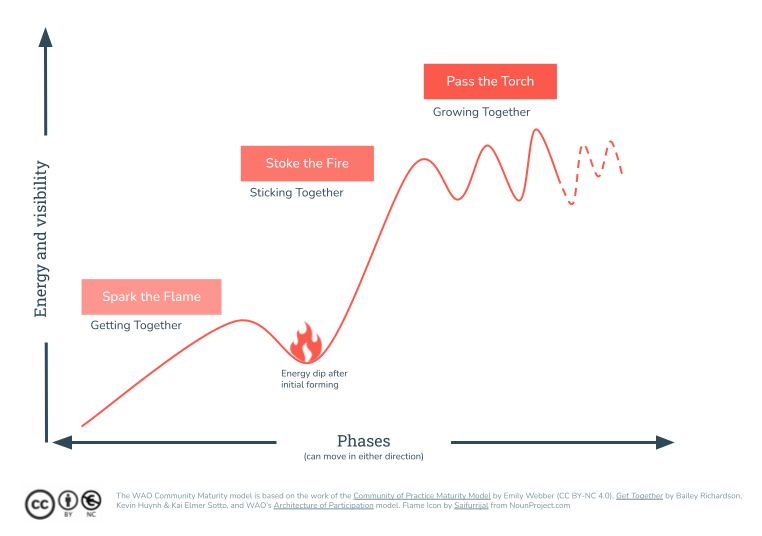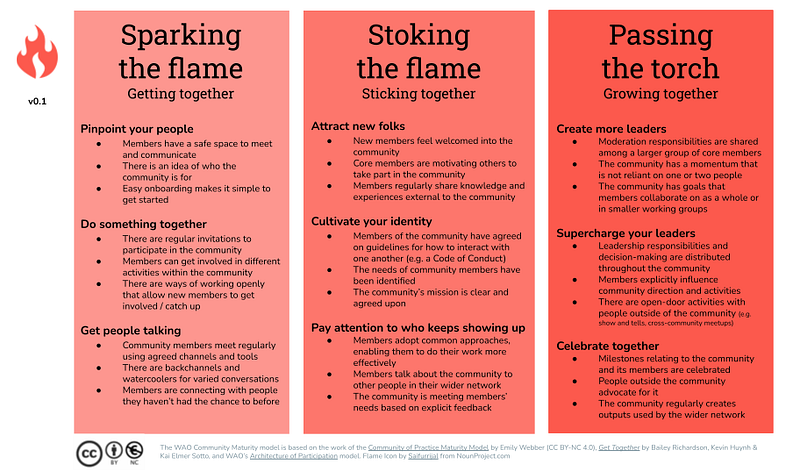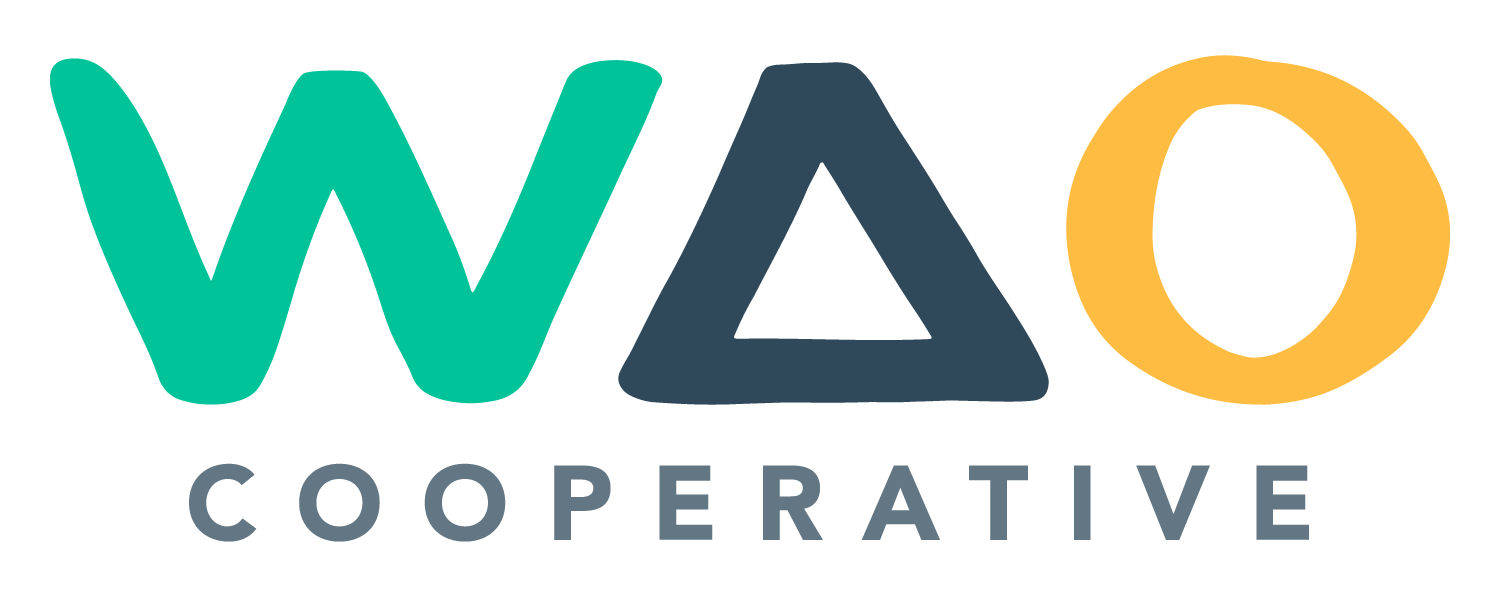🔥 Towards a maturity model for online, networked communities (v0.1)
Adapting and applying existing work to combine the best elements of each

WAO is doing some really interesting work with Participate at the moment. As you can read in our previous posts about the emerging Keep Badges Weird community, we’re doing some emergent community building and catalysing the community towards sustainability.
As part of that work, we thinking about the maturity not only of the KBW community, but of online, networked communities in general. We have over a decade of experience in this area, and are thankful for the work and inspiration of collaborators past and present. In addition, we are grateful for Emily Webber’s Community of Practice Maturity Model, and the book Get Together by Bailey Richardson, Kevin Huynh & Kai Elmer Sotto.
The above image consists of the phases identified in the book Get Together combined with Emily Webber’s graph of ‘Energy and visibility’ (Y axis) vs ‘Phases’ (X axis). We like the three-part approach focused as it meshes with our experience and provides a nice visual metaphor for the type of activities involved (‘sparking the flame’, ‘stoking the fire’, and ‘passing the torch’).
We’re currently in the second phase with the KBW community, and so thinking carefully about how to engage community members without overwhelming them. As a result, we’ve gone into more detail as represented in the graphic below. The text for this is also reproduced at the bottom of this post for those who might have difficult reading it.

The three sub-categories under each heading (e.g. ‘Pinpoint your people’) are taken from the Get Together book, while the bullet points are a combination of Emily Webber’s work and our own. In particular, the results of some community canvas work we’ve done previously.
We noticed that many Community of Practice models assume much more of an existing shared context than we’re often used to in Open Source communities. For example, some models imply that community members all work for the same organisation. Our starting point is that while online, networked Communities of Practice form around shared interests, it is unlikely that they all work in the same organisation, or even sector.
WAO has labelled this as version 0.1 of our thinking on the subject. The maturity model itself is likely to be more mature than some of our completely original thinking on the subject, because of the expertise upon which we’re drawing. We actively encourage feedback, in the comments section below, by joining the KBW community, or by emailing us: communities@weareopen.coop
If you’re looking for help wany phase of Communities of Practice for online networked communities, please get in touch! We’ll probably be able to help and, if we can’t, we’ll probably know someone who can :)
The following is the text from the WAO Communities of Practice Maturity Model v0.1 (as seen in the second image above):
Sparking the flame
Getting together
Pinpoint your people
- Members have a safe space to meet and communicate
- There is an idea of who the community is for
- Easy onboarding makes it simple to get started
Do something together
- There are regular invitations to participate in the community
- Members can get involved in different activities within the community
- There are ways of working openly that allow new members to get involved / catch up
Get people talking
- Community members meet regularly using agreed channels and tools
- There are backchannels and watercoolers for varied conversations
- Members are connecting with people they haven’t had the chance to before
Stoking the flame
Sticking together
Attract new folks
- New members feel welcomed into the community
- Core members are motivating others to take part in the community
- Members regularly share knowledge and experiences external to the community
Cultivate your identity
- Members of the community have agreed on guidelines for how to interact with one another (e.g. a Code of Conduct)
- The needs of community members have been identified
- The community’s mission is clear and agreed upon
Pay attention to who keeps showing up
- Members adopt common approaches, enabling them to do their work more effectively
- Members talk about the community to other people in their wider network
- The community is meeting members’ needs based on explicit feedback
Passing the torch
Growing together
Create more leaders
- Moderation responsibilities are shared among a larger group of core members
- The community has a momentum that is not reliant on one or two people
- The community has goals that members collaborate on as a whole or in smaller working groups
Supercharge your leaders
- Leadership responsibilities and decision-making are distributed throughout the community
- Members explicitly influence community direction and activities
- There are open-door activities with people outside of the community (e.g. show and tells, cross-community meetups)
Celebrate together
- Milestones relating to the community and its members are celebrated
- People outside the community advocate for it
- The community regularly creates outputs used by the wider network

Discussion